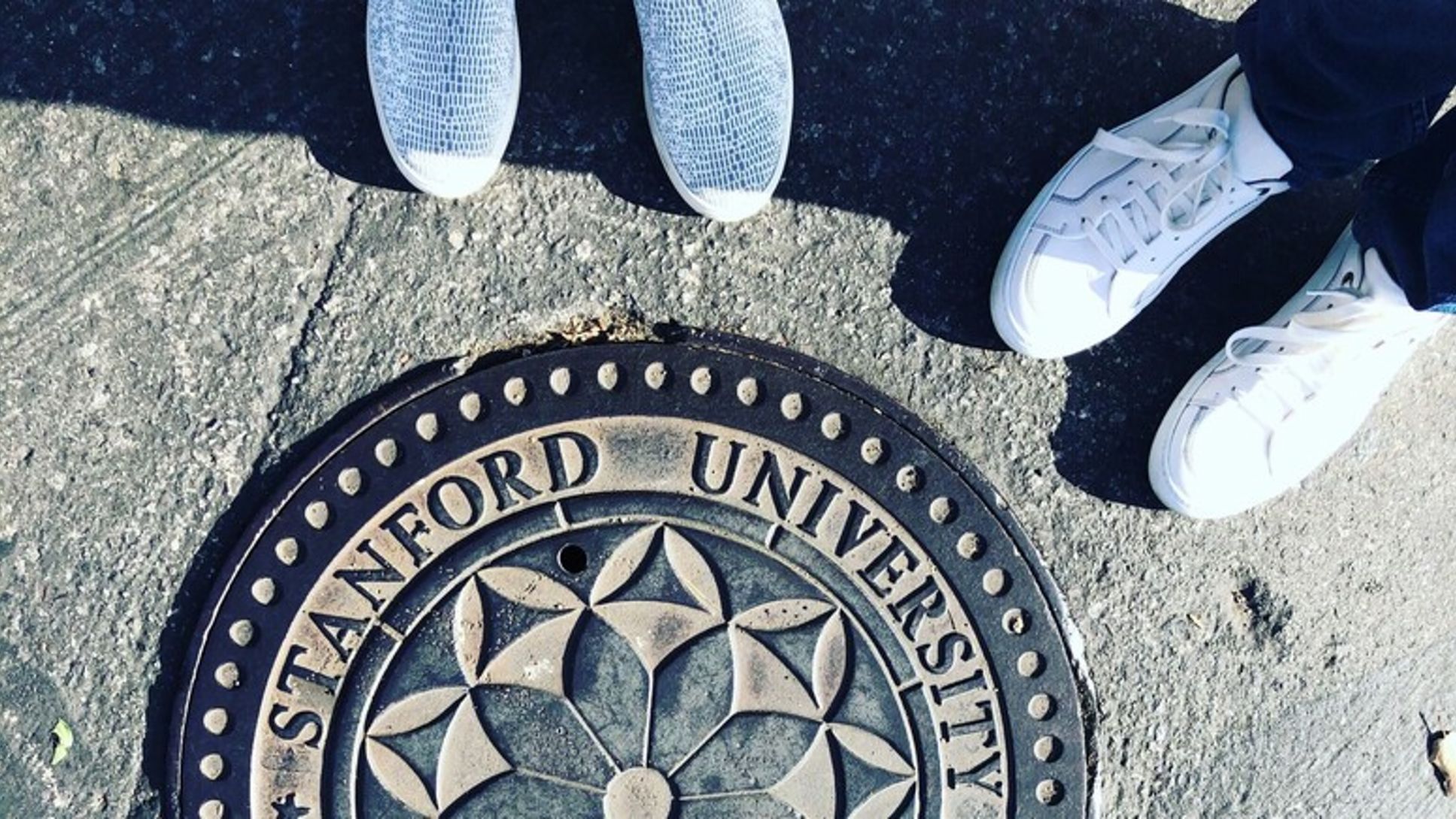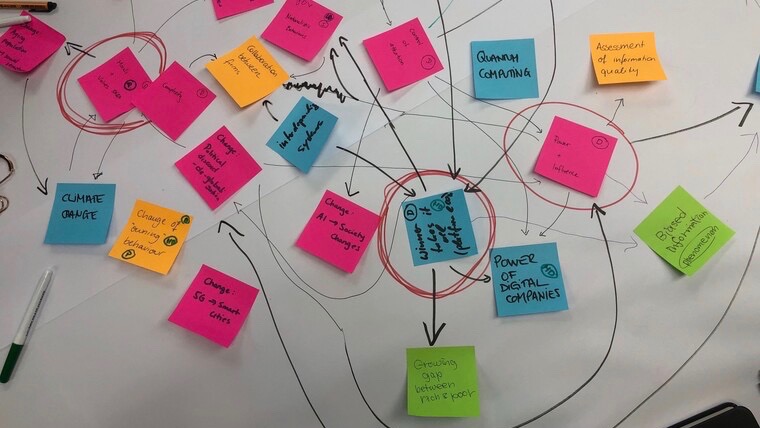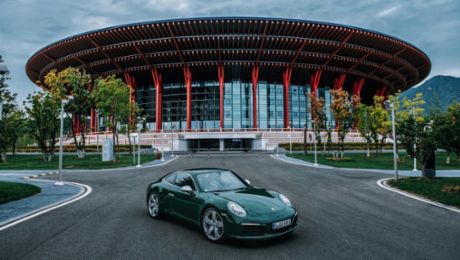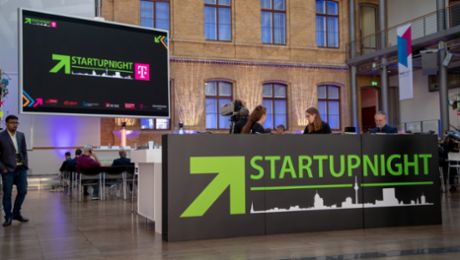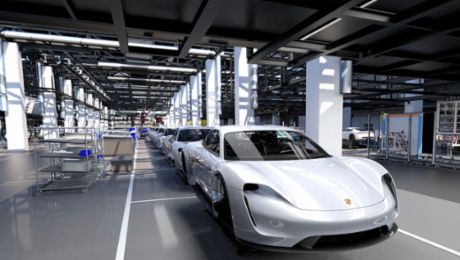Last week, I had the opportunity to visit — and somehow attend — Stanford for the first time, as part of the LeadershipGarage Experience “Inside Silicon Valley,” a multi-day symposium with international guests focusing on the challenges of the digital future. Now, it’s one thing to read about an institution like Stanford and its history or to hear someone tell a story about it, but it’s another entirely to actually be there on campus in person. Some of you may know that I’ve long loved and admired the music of David Lang, and can guess that the opportunity to attend his alma mater was quite exciting for me.
When I arrived on campus the first day, I instantly fell in love with the atmosphere, and I was beyond excited by the thought of all the incredibly intelligent people studying there. It felt like being on the trail of many of my role models and there was an inspiring time ahead. My guess has been confirmed, and I’d like to share my highlights with you here.
20+ managers to learn from the Silicon Valley success story
The LeadershipGarage program, which was organized by Sabine Remdisch from Leuphana University, is based on three pillars: experience, understand and leverage. I was part of a group of two dozens managers and representatives from European companies, including a handful of Porsche colleagues. We met several scientists from Stanford as well as entrepreneurs from Silicon Valley and keenly listened to what they had to tell us. Here are five takeaways from a week full of new impulses and smart thoughts.
1. Innovation is not about things, it’s about people
Even though it’s not considered the “one and only” tech hotspot anymore, Silicon Valley’s influence is still undeniable. It has been a bedrock for innovation in the tech sector and beyond. But how does its ecosystem look like and what factors helped shape its development? We talked about these issues with several academics from different backgrounds. One sentence that stuck with me was the comment by Michael Shanks, British archeologist, and Professor of Classics at Stanford. He said, “If you want to understand change and innovation, it’s about people, period.” I couldn’t agree more. It strengthened my belief that it’s incredibly important to focus on the mindset, culture and the dynamics of organizations and teams — and made me proud thinking of our highly-functioning, agile and diverse team at the Porsche Digital Lab.
2. Lessons from the father of Design Thinking: Dance with ambiguity
If you’ve heard of Design Thinking before, you’ve probably heard of Larry Leifer as well. He is the founding director of the Stanford Center for Design Research and basically the inventor of Design Thinking. As I’m a huge fan of the method, it was a great honor to meet him in person. During his lecture about empathy and user needs, two main principles of Design Thinking, I took away three useful advice:
1. Teams of three are best.
2. Ask why! And don’t ask only once, always ask at least five times. Ask yourself, ask your team, ask your clients.
3. Design Thinking and innovation is all about learning to dance with ambiguity — about individual creativity in the context of a team design process, and developing tools and methods that promote superior design and manufacturing of products regarding human complexity.
3. The artificial intelligence hype is real
In the beginning of this year, I wrote about why 2019 would be the year of artificial intelligence in Germany on our Porsche blog. One of my main key points was that Germany is not using its potential to the fullest: What we’re currently not really able to do in Germany, has already been achieved elsewhere, namely in China and the United States. But I’m not a pessimist at all! During the last week, we visited Google, Nvidia and the 360 lab and got a glimpse into the future of AI — seeing the cutting-edge research happening in the Silicon Valley labs and witnessing the advancements in artificial intelligence here, I feel “re-triggered”. Silicon Valley has a lot to teach us and I am happy to soak up as much as I can and bring it with me to Germany, to Berlin, to Porsche.
4. Kill your problems with clarity: the pre-mortem method
On day three, we went to San Francisco for a workshop at creative company Butchershop, where CEO Trevor Hubbard and Haufe CEO Kelly Max taught us to spur innovation by killing our problems. How? With the pre-mortem method, which extremely focuses on clarity. Because “clarity brings vision, and vision lets you see problems and opportunities from a proactive angle.” The pre-mortem method forces you to look ahead at the challenges that are ahead of you, and to create a plan to navigate around them. The workshop opened my eyes — it’s so simple and yet so stunning. As focus is a topic that concerns me a lot at the moment, I read a lot about it and made it my theme in my previous #workingoutloud circle, I’ll definitely try this method very soon. If anyone already made some experiences and is willing to share, I’m happy to hear from you!
5. Tackling complexity to lead in the face of rapid change
Last but not least, my absolute highlight was Professor Banny Banerjee’s speech about “Leadership and Organizational Capacities in the face of Rapid Change” on our last day of the LeadershipGarage experience. He is the Director and Founder of the Stanford Changelabs and well-known for his pioneering work in design thinking, but also his systems-based approach to innovation, which he outlined for us. Besides the Systems Leadership models for tackling complexity in large-scale transformations that he presented, his presence, knowledge and competence impressed me at least as much. Yes, it was complex — but this was one of the most interesting talks I listened to this year!

Even though we were an exclusive group of managers who attended this event, these strategies, knowledge and all the insights are available for everyone online. There are so many webinars and lectures of Stanford professors online, giving the public access to their knowledge.
Goodbye Stanford!
Returning home, I noticed that the seal of Stanford university contains the German inscription “Die Luft der Freiheit weht”, which translates to “the wind of freedom blows”. It reflects the principles of academic freedom, of course, but after spending four days at the university, it also encapsulates the spirit of the campus and the whole Silicon Valley area to me — the essence of entrepreneurship: self-determination, innovation and change.
Closing up, I’d like to give a huge thanks to Barbara who organized the trip for us and to everyone who was involved — this trip was truly inspirational for me. I will now put some David Lang on my headphones and go for a long run, reflecting on this great experience.
